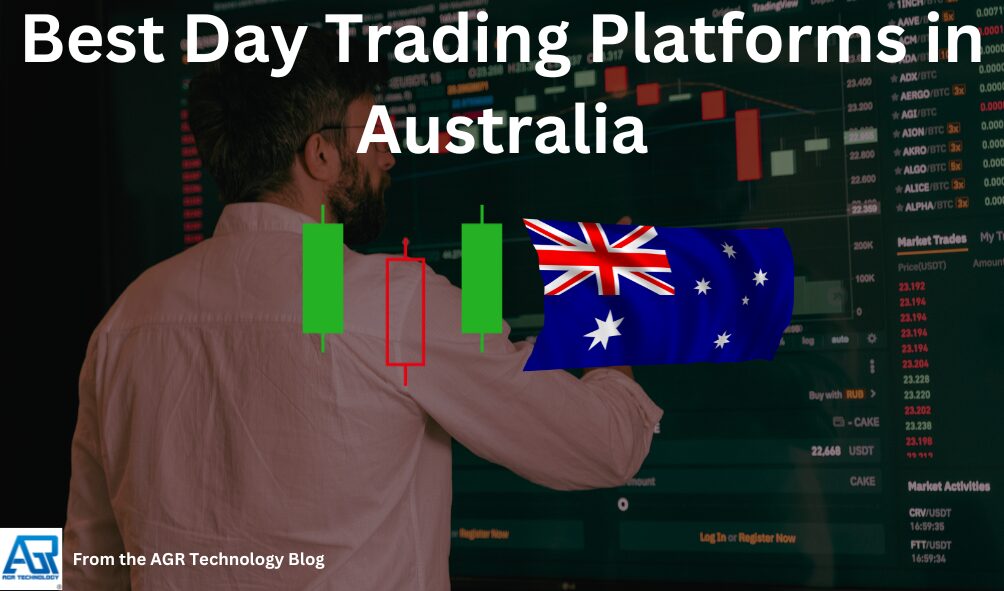Disclaimer: General information only. All kinds of investment (particularly trading CFDs, commodities, and FX) involve significant risk, including the possibility of losing more than the amount invested, as well as market volatility and liquidity hazards. Past performance does not guarantee future results. Most investors will find such operations unsuitable.
Best Day Trading Platforms in Australia for December 2025: Top Picks Revealed
Day trading has become an increasingly popular investment strategy for Australian traders seeking to capitalize on short-term market movements. With the right platform traders can execute multiple trades throughout the day aiming to accumulate small profits that add up to significant returns.
Selecting the best day trading platform requires careful consideration of multiple factors. Australian traders must prioritize platforms regulated by the Australian Securities and Investments Commission (ASIC) ensuring security and compliance. Key elements such as low trading fees competitive leverage options robust charting tools and fast execution speeds can make a substantial difference in a trader’s overall performance and potential profitability.
For those looking to dive into the dynamic world of day trading finding a reliable and feature-rich platform is crucial. This guide will explore the top day trading platforms in Australia providing insights into their unique offerings and helping traders make informed decisions in the fast-paced financial markets.
Etoro Australia
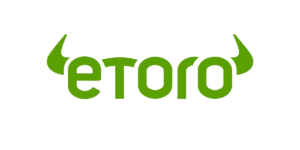
When it comes to different types of online trading Etoro is a well known player that stands out supporting a variety of investments such as CFDs (Contracts for difference), traditional forex and stock trading as well as Cryptocurrency assets.
It combines a user-friendly interface with a wide choice of financial instruments, making it suitable for both rookie and expert traders. What distinguishes eToro is its unique social trading feature, which allows Australian clients to follow and mimic the trades of successful investors, encouraging a community-driven approach to investing.
Pros:
-
User-friendly platform suitable for beginner traders
-
Innovative social trading features
-
Diverse range of investment options
-
Strong community and educational support
-
Free stock trading
Cons:
-
Withdrawal and inactivity fees
-
Slow customer service
PDS Link: https://www.etoro.com/wp-content/uploads/2024/08/20240811_PDS-2.pdf
Interactive Brokers Australia

Interactive Brokers, Inc. is an American multinational brokerage corporation that runs the largest electronic trading platform in the United States, with an average of 3 million trades per day in 2023. The organisation provides a variety of services, including stocks, options, futures contracts, bonds, mutual funds, currencies, cryptocurrency, contracts for difference, derivatives, and event-driven trading contracts. With operations in 34 countries and 27 currencies, the company has 2.6 million institutional and individual brokerage customers and a total customer equity of $426 billion. Thomas Peterffy founded the company, which is now ranked 473rd on the Fortune 500 and has offices in major financial centres across the world.
Interactive Brokers (IBKR) is a worldwide known online brokerage platform that caters to both novice and advanced investors, providing access to a diverse range of markets such as stocks, currency, and commodities. With affordable costs and a wide range of trading instruments, it’s great for individuals wishing to diversify globally and engage in more advanced trading techniques. However, its various features and complex cost structure may be overwhelming for beginning traders.
Interactive Brokers stands out as a leading alternative with considerable benefits:
- Global market access to 135+ markets.
- Competitive low-fee structure
- Advanced trading technology
- Comprehensive research tools
- ASIC regulates with stringent compliance standards
Avatrade
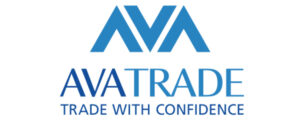
AvaTrade, a worldwide known online broker, has been in business since 2006. It offers a diverse set of trading opportunities, including FX, commodities, cryptocurrencies, stocks, indices, and bonds. AvaTrade is noted for its robust regulatory system, which includes licences in numerous jurisdictions, assuring a secure trading environment for its clients.
AvaTrade offers a rich educational resource center and multiple trading platforms to cater to both novice and experienced traders. The broker places a strong emphasis on customer support and provides range of trading tools and features to enhance the trading experience.
Supported investment instruments:
-
Forex
-
Commodities
-
Cryptocurrencies
-
Stocks
-
Indices
-
Bonds
-
ETFs
-
Options
- Support for Metatrader applications (4 & 5)
Pros:
-
Fast and simple account opening
-
Multiple advanced trading platforms
-
Comprehensive educational resources
-
Excellent customer support
- Web interface, mobile app and Metatrader compatibility
Cons:
-
Inactivity fees can be high
-
Limited research tools compared to some competitors
- Limited options for Cryptocurrency assets and can only trade them as there is at the time of writing no wallet functionality to store your coins
Tiger Brokers

Tiger Brokers is an online brokerage platform that provides access to a range of international markets, including the ASX, US (NYSE, NASDAQ), and Hong Kong. Established in 2014 and with over 10 million users worldwide, it has quickly gained recognition for its user-friendly interface and competitive pricing structure, making it a viable option for both novice and experienced investors. With a focus on technology-driven solutions, the platform offers proprietary desktop and mobile trading apps designed to streamline the trading experience.
Key Features
- Global Market Access: Tiger Brokers allows users to trade a variety of assets, including stocks, ETFs, and US options. It offers access to markets in Australia, the US, Hong Kong, and more, providing investors with the ability to diversify their portfolios across different regions.
- Low-Cost Trading: The platform is known for its competitive fees, including zero minimum deposit and low commission rates on US and ASX trades. Users can benefit from cost-effective trading, especially when buying high-value stocks like those listed on the US exchanges.
- Proprietary Platforms: Tiger Brokers offers its own trading platforms, the Tiger Trade desktop application and a mobile app, which come equipped with various trading tools such as stock screening, real-time market data, and customisable indicators. These features are designed to support both casual traders and those with more advanced needs.
- Fractional Shares: To make investing in high-priced US stocks more accessible, Tiger Brokers offers fractional shares, allowing investors to purchase a portion of a stock rather than buying a whole share.
- Security Features: The platform has a Tiger Token app that supports two-factor authentication (2FA) for added security, ensuring the protection of user accounts.
Pros:
- Low Fees: Tiger Brokers offers one of the most competitive fee structures in the industry, making it an appealing choice for traders looking to reduce trading costs. It also has no inactivity fees, making it an attractive option for long-term investors.
- Wide Asset Selection: With access to US, Australian, and Hong Kong markets, Tiger Brokers provides a broad range of assets, making it suitable for those who want to diversify their portfolio across multiple regions.
- Technology-Driven: The platform leverages advanced technology, ensuring fast execution and a smooth trading experience. Its proprietary apps and tools cater to both beginner and advanced traders.
- CHESS-Sponsored Accounts: In line with Australian market standards, Tiger Brokers offers CHESS sponsorship for Australian clients, giving investors increased security and direct registration of their shares.
Cons:
- Limited Asset Classes: While Tiger Brokers offers a range of equities and ETFs, it does not support trading in forex, CFDs, or cryptocurrencies. This makes it less suitable for investors who wish to diversify into these asset classes.
- Complex Fee Structure for Smaller Trades: While the platform’s fees are low for high-value trades, smaller traders may find the per-share pricing for US stocks more complex and potentially more costly when trading inexpensive stocks.
- Regulatory Concerns: Tiger Brokers has faced legal challenges in some jurisdictions, including a fine in New Zealand for breaches of anti-money laundering laws. These regulatory issues may be a concern for risk-averse traders.
- Lack of Educational Resources: Tiger Brokers is more suited to intermediate and experienced investors, and it lacks extensive educational materials or a supportive trading community for beginners.
Plus500

Plus500 offers a streamlined trading solution:
- Commission-free trading on CFDs
- User-friendly interface
- Risk management tools
- Comprehensive market coverage
- Mobile app with real-time trading capabilities
Plus500, founded in Israel and headquartered in London, provides online trading services for contracts for difference (CFDs), share dealing, futures trading, and futures options. The company has subsidiaries in the UK, Cyprus, Australia, Israel, the Seychelles, Singapore, Bulgaria, Estonia, the USA, Dubai, Indonesia, the Bahamas, and Japan. It is listed on the London Stock Exchange and is a component of the FTSE 250 Index.
Plus500 is a reputable and well-regulated CFD trading platform that offers a diverse range of assets and affordable trading fees. While it has an easy-to-use interface and excellent customer assistance, its limited instructional resources and reliance on a single platform may not be suitable for many traders.
Pros:
- Strong regulatory supervision by several authorities
- A wide variety of tradable assets, including Forex and share CFDs
- Competitive spreads and low minimum deposit requirements
- 24/7 customer service with a reputation for quality
- Sleek, user-friendly web and mobile platforms
Cons:
- Lacks instructional materials and market analysis
- Limited platform support (just its own internal platform)
- A single account type with no multi-account or business options
- There are no advanced trading tools like the ones given by competitors
Pepperstone

Pepperstone is a prominent online forex and CFD broker serving traders since its inception in 2010. Headquartered in Melbourne, Australia, Pepperstone has grown rapidly, earning a solid reputation for its competitive pricing, advanced trading infrastructure, and exceptional customer service. The broker is well-regulated by multiple authorities, including the FCA in the UK and ASIC in Australia, ensuring a secure trading environment.
Pepperstone is particularly known for its fast execution speeds and low spreads, which are crucial for forex traders. The broker caters to both retail and institutional clients, providing a range of trading instruments and platforms that suit various trading styles and preferences. With a strong focus on technology and customer support, Pepperstone has positioned itself as a reliable and innovative player in the online trading industry.
-
Wide Range of Markets: Access to CFDs across Forex, Crypto, Indices, Commodities, and Shares
-
Short Selling: Capability to short sell equities and ETFs through CFDs
-
Integration with TradingView: Direct connection to TradingView for enhanced charting and trading
-
MetaTrader Platforms: Trusted MT4 and MT5 platforms with low spreads and high-leverage options
Investment Options:
Pepperstone offers a wide variety of trading instruments, allowing traders to diversify their portfolios:
-
Forex: Major, minor, and exotic currency pairs
-
Indices: Trade on major global indices
-
Commodities: Gold, silver, oil, and more
-
Cryptocurrencies: Bitcoin, Ethereum, Litecoin, and others
-
Shares: Access to shares from major global markets
Trading Platforms:
Pepperstone provides several trading platforms to accommodate different trading needs and preferences:
-
MetaTrader 4 (MT4): A popular choice among forex traders for its user-friendly interface and advanced charting tools.
-
MetaTrader 5 (MT5): An upgraded version of MT4, offering additional features and more asset classes.
-
cTrader: Known for its intuitive interface and advanced order capabilities, cTrader is favored by algorithmic traders.
-
TradingView Integration: Offers seamless integration with TradingView for advanced charting and social trading features.
Fees:
-
Australian Share CFDs: 0.07% commission per side
-
For FX trades on a Razor account, commissions are $3.50 per lot per trade plus spread cost
-
Pepperstone’s Standard account does not charge commissions on trades, but there’s a 1 pip markup on the raw spreads
-
The brokerage charges no inactivity and account fees, and withdrawal is generally free, except for Skrill and Neteller, with a $20 fee for bank transfers for non-EU and Australian clients
Pros
-
Tight spreads and low commissions.
-
$0 Minimum Deposit
-
1200+ Traded Assets
-
No Commission on Standard Account
-
No withdrawal fee
Cons
-
MetaTrader platform is basic
-
Live chat is a bit slow
Day trading represents a dynamic financial strategy where traders buy and sell financial assets within a single trading session. Australian traders leverage this approach to capitalize on short-term market price movements across various financial instruments.
Key Characteristics of Day Trading
Day trading in Australia involves several distinctive elements:
- Trading Window: Primarily conducted on the Australian Securities Exchange (ASX) between 10:00 and 16:00 AEST
Asset Classes: Encompasses multiple financial instruments including:
- Stocks listed on ASX
- Forex currency pairs (AUD-based)
- Commodities like iron ore and gold
- Derivatives including futures and options
Strategic Approaches:
- Trend following strategies
- News-based trading
- Technical analysis utilizing charts and indicators
Legal and Regulatory Considerations
Day trading in Australia operates under strict regulatory frameworks:
- Regulatory Body: Australian Securities and Investments Commission (ASIC) provides oversight
Compliance Requirements:
- Platforms must be ASIC-registered
- Mandatory risk disclosure statements
- Capital adequacy regulations
Risk Management:
- Leverage restrictions
- Mandatory margin requirements
Traders must understand these complex regulations to ensure compliant and strategic day trading practices in the Australian financial landscape.
Essential Factors for Choosing a Day Trading Platform

Selecting the right day trading platform determines a trader’s potential success in the Australian financial markets. Traders must carefully evaluate multiple critical factors to ensure optimal performance and cost-effectiveness.
Trading Costs and Fees
Key considerations for trading costs include:
- Brokerage fees: Range from $0-$11 per trade typically
- Transaction costs: Percentage-based commissions
- Foreign exchange conversion rates: Typically 0.5-0.7%
- Hidden charges: Account maintenance and inactivity fees
Asset Range and Market Access
Comprehensive platforms offer:
- Diversified asset classes: Stocks, ETFs, CFDs
- Multiple market exchanges: ASX, NYSE, NASDAQ
- Global market coverage
- Derivative trading options
- Real-time international market data
Platform Features and Tools
Essential trading tools include:
- Advanced charting capabilities
- Technical analysis indicators
- Risk management features
- Mobile and desktop compatibility
- Algorithmic trading support
- Automated trading interfaces
- Intuitive interface design
- Fast order execution
- Low-latency trading
- Comprehensive educational resources
- Responsive customer support
- Seamless account funding options
Top Criteria for Evaluating Day Trading Platforms
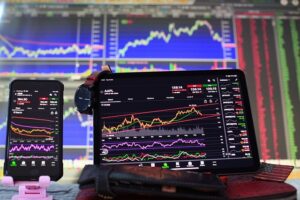
Day trading platforms in Australia require comprehensive evaluation across multiple critical dimensions. Traders must assess platforms through a strategic lens that balances performance, functionality, and risk management capabilities.
Performance and Execution Speed
Execution speed determines trading success in volatile markets. Key performance metrics include:
- Latency rates under 50 milliseconds
- Real-time market data processing
- Order execution reliability
- Trade confirmation timestamps
- Automated trade routing capabilities
Research and Analysis Resources
Robust research tools differentiate superior platforms:
- Advanced charting capabilities
- Technical indicator libraries
- Historical price data access
- Market sentiment analysis
- Economic calendar integrations
- Company fundamental screening
Comprehensive research platforms offer:
- ASX-specific market insights
- Customizable screening filters
- Multi-timeframe analysis tools
- Comparative financial metrics
Risk Management Tools
Critical risk mitigation features include:
- Automatic stop-loss configurations
- Position size calculators
- Portfolio diversification alerts
- Real-time margin requirement tracking
- Maximum drawdown monitoring
- Risk-reward ratio calculators
Risk management priorities:
| Tool | Functionality |
|---|---|
| Stop Loss | Automated loss limitation |
| Position Sizing | Capital protection |
| Margin Alerts | Leverage control |
| Portfolio Monitoring | Diversification tracking |
Mobile and Desktop Compatibility
Platform accessibility across devices ensures continuous trading flexibility:
- Responsive web interfaces
- Native mobile applications
- Cross-platform synchronization
- Consistent user experience
- Cloud-based trade tracking
- Device-agnostic performance
| Platform Type | Key Features |
|---|---|
| Desktop | Advanced charting |
| Mobile | On-the-go trading |
| Tablet | Intermediate analysis |
| Web | Universal access |
Risk Management Techniques
Effective risk management protects traders from significant financial exposure. Some strategies you may wish to utilize include:
- Position Sizing: Limiting individual trade investments and balancing the values of your portfolio
- Stop-Loss Configurations: Automatically exiting positions when predetermined loss thresholds are reached
- Portfolio Diversification: Spreading investments across multiple asset classes and sectors
- Leverage Control: Maintaining conservative leverage ratios to minimize potential losses
Australian traders should implement disciplined risk management protocols to sustain long-term trading performance.
Common Trading Approaches
Day traders employ multiple strategic frameworks:
- Trend Following
- Capitalizing on sustained market momentum
- Tracking assets demonstrating consistent upward or downward trajectories
- News-Based Trading
- Executing trades based on real-time market announcements
- Rapidly responding to economic indicators and corporate events
- Range Trading
- Identifying price consolidation zones
- Buying at support levels and selling at resistance points
- Breakout Strategy
- Entering trades when price movements exceed established trading ranges
- Targeting potential significant price shifts
- Scalping
- Executing multiple rapid trades
- Capturing minimal price fluctuations
- Requiring advanced technological infrastructure
Each approach presents unique advantages and challenges. Successful day traders often combine multiple strategies and continuously refine their techniques through systematic backtesting and performance analysis.
Beginner’s Guide to Day Trading
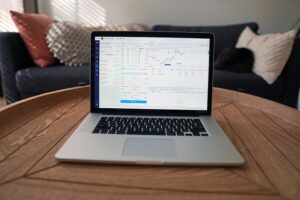
Day trading involves executing financial trades within a single market session, targeting short-term price movements across various Australian markets. Successful day trading requires strategic preparation, understanding market dynamics, and developing robust trading skills.
Getting Started Requirements
Essential requirements for initiating day trading in Australia include:
- Capital Allocation: Minimum recommended trading capital ranges from $5,000 to $10,000
- Trading Account: Open an account with ASIC-regulated platform
- Technical Infrastructure:
- High-speed internet connection
- Reliable computer/mobile device
- Trading platform with real-time market data
- Legal Compliance:
- Verify age requirements (18+ years)
- Australian tax file number
- Proof of identification documents to fulfill KYC regulations
Understanding Market Dynamics
Market dynamics critical for day trading encompass:
- Asset Volatility: Analyze price fluctuation patterns
- Trading Hours:
- ASX trading times
- International markets: Consider time zone differences
- Market Indicators:
- Volume trends
- Price momentum
- Economic event calendars
- Risk Assessment:
- Liquidity analysis
- Market sentiment tracking
- Correlation between different asset classes
- Simulation Platforms:
- Paper trading accounts
- Risk-free practice environments
- Learning Resources:
- Online trading courses
- Technical analysis webinars
- Professional trading forums
- Analytical Techniques:
- Chart pattern recognition
- Technical indicator interpretation
- Risk management strategies
- Continuous Improvement:
- Performance tracking
- Trading journal maintenance
- Regular strategy backtesting
Potential Risks and Considerations
Day trading presents complex financial challenges that demand comprehensive understanding and strategic preparation. Traders must navigate multiple risk dimensions to protect their investment capital and psychological well-being.
Financial Risks
Australian day traders encounter several critical financial risks:
- Market Volatility: Rapid price fluctuations can lead to significant losses
- Emotional Decision-Making: Stress and impulsive reactions may impact judgment
- Leverage Risks: Trading on margin amplifies both gains and potential losses
- Liquidity Issues: Certain assets may be hard to buy or sell quickly
- Knowledge Gaps: Lack of sufficient research or experience can lead to poor decisions
- Overtrading: Excessive trades can increase transaction costs and risks
- Regulatory Risks: Non-compliance or changes in regulations may affect trading activities
Psychological Challenges
Day trading demands exceptional mental resilience:
- Emotional Decision Making: Trading triggers complex psychological responses
- Fear and greed significantly impact rational decision-making
- Potential for impulsive trades during market stress
- Performance Pressure: Constant market performance monitoring can create stress
- Potential for burnout and trading paralysis
Recommended stress management techniques can include:
- Predetermined trading rules
- Scheduled breaks
- Performance journaling
- Setting personal goals and budgets for trading activities
Regulatory Compliance
Navigating Australian financial regulations requires diligence:
- ASIC Regulatory Framework
- Mandatory risk warnings for derivative trading
- Compulsory professional qualification requirements
- Regular reporting and disclosure obligations
- Capital gains tax implications for trading profits
- Different tax treatments for professional vs. casual traders
| Risk Category | Potential Impact | Mitigation Strategy |
|---|---|---|
| Market Volatility | High | Strict stop-loss implementation |
| Leverage Exposure | Medium-High | Conservative position sizing |
| Psychological Strain | Medium | Structured trading plan |
| Regulatory Compliance | Low-Medium | Continuous education |
Be sure to seek advice from an accountant or financial advisor for up-to-date rules around what you may be required to report on or follow for your specific trading scenarios.
Choosing the Right Platform for Your Needs
Day trading platforms vary significantly in features, functionality, and suitability for different trading approaches. Selecting the optimal platform requires a comprehensive evaluation of personal trading goals and platform capabilities.
Matching Platform to Trading Style
Australian day traders must align platform selection with their specific trading methodology:
Technical Traders
- Require advanced charting tools
- Need real-time technical indicators
- Prioritize platforms with:
- Customizable chart layouts
- Multiple timeframe analysis
- Technical pattern recognition
Fundamental Traders
- Seek comprehensive market research resources
- Value platforms with:
- Company financial statements
- Economic calendar integration
- News sentiment analysis tools
High-Frequency Traders
- Demand ultra-low latency execution
- Evaluate platforms based on:
- Millisecond order processing
- Direct market access
- Minimal slippage rates
Comparing Platform Features
Critical comparison parameters for Australian day trading platforms:
| Feature | Importance | Evaluation Criteria |
|---|---|---|
| Execution Speed | High | < 50ms response time |
| Commission Rates | Medium | < 0.1% per trade |
| Asset Coverage | High | Multiple asset classes |
| Research Tools | Medium | Comprehensive market analysis |
| Mobile Compatibility | High | iOS/Android support |
Assessing Personal Trading Goals
Traders must conduct rigorous self-assessment across multiple dimensions:
Risk Tolerance Evaluation
- Calculate maximum acceptable loss percentage
- Define portfolio risk allocation
- Establish strict stop-loss parameters
Capital Requirements
- Leverage considerations: Maximum 1:30 for retail traders
- Diversification strategy implementation
- Implement systematic performance metrics
- Track key performance indicators:
- Win rate
- Risk-reward ratio
- Drawdown percentage
By methodically analyzing personal trading characteristics and platform capabilities, Australian day traders can make informed platform selection decisions that optimize their trading potential.
Key Takeaways
- Platform Selection is Crucial: Choose a day trading platform regulated by ASIC, with low trading fees, competitive leverage, robust charting tools, and fast execution speeds to maximize trading potential in the Australian market.
- Understand Market Dynamics: Successfully day trading in Australia requires knowledge of ASX trading hours, diverse asset classes (stocks, forex, commodities), and strategic approaches like trend following and technical analysis.
- Risk Management is Essential: Consider implementing stop-loss configurations, diversify investments, and maintain conservative leverage ratios to protect capital.
- Technical Tools Matter: Leverage advanced platform features including real-time market data, technical indicators, mobile compatibility, and comprehensive research resources to make informed trading decisions.
- Compliance and Education are Key: Stay informed about ASIC regulations, maintain proper tax reporting, and continuously improve trading skills through practice, education, and performance tracking.
Conclusion
Selecting the right day trading platform is crucial for success in the Australian financial markets. Traders must carefully evaluate platforms based on performance metrics transaction costs and risk management capabilities.
The best platforms offer comprehensive tools advanced research resources and robust mobile compatibility. By prioritizing regulated platforms with competitive features traders can enhance their potential for profitable short-term market interactions.
Continuous learning adaptation and strategic risk management remain essential for navigating the dynamic world of day trading. Aspiring traders should remain committed to developing their skills staying informed about market trends and maintaining disciplined trading practices.
Note: This is not financial advice and is just designed to provide general information. While we run our own checks and assess each company included on our website, we may not have covered all options. If you decide to apply for a product, you will interact directly with the vendor, not AGR Technology. AGR Technology suggests that you read the appropriate PDS or offer documents before accepting any financial product offer to assess whether the products are suitable for you. Target Market Determinations are available on the provider’s website.
AGR Technology may receive a commission on sales generated by partner links on this page, but this has no influence on our opinions or evaluations and is completely free of charge to you. While we make every attempt to keep our content up-to-date this should not be taken as financial advice, be sure to seek professional advice if required.
Factors considered when writing this article:
We set criteria for picking loan platforms to analyse, such as reputation, services offered, user base, regulatory compliance, types of functionality available and the years of operation along with browsing the respective websites to validate they have licences and compliance to operate in Australia, as well as other things like KYC protocols and contacting the companies.
Checked each platform for user-friendly design interfaces to ensure platforms are straightforward for beginners and more experienced customers to grasp. We obtained information about each company by visiting their separate websites, signing up for an account, reading user reviews, and looking for recent news or events related to the platforms.
Frequently Asked Questions
What is Day Trading in Australia?
Day trading in Australia involves buying and selling financial assets within a single trading session, primarily on the Australian Securities Exchange (ASX). Traders aim to profit from short-term market fluctuations by trading various assets like stocks, forex pairs, commodities, and derivatives. The goal is to capitalize on price movements during specific trading hours, using strategies like technical analysis and trend following.
Is Day Trading Legal in Australia?
Yes, day trading is completely legal in Australia. Traders must comply with regulations set by the Australian Securities and Investments Commission (ASIC). It’s crucial to trade through ASIC-regulated platforms to ensure legal and secure trading. Traders should understand regulatory requirements, maintain proper documentation, and follow guidelines for risk management and financial reporting.
What are the Best Day Trading Platforms in Australia?
Some top day trading platforms in Australia include eToro, Pepperstone, CommSec, and Interactive Brokers. Key considerations when choosing a platform are low trading fees, ASIC regulation, comprehensive research tools, fast execution speeds, and a wide range of tradable assets. Each platform offers unique features, so traders should compare options based on their specific trading needs and preferences.
What Risks are Involved in Day Trading?
Day trading involves significant financial risks, including market volatility, potential substantial losses, and psychological pressures. Traders face challenges like emotional decision-making, transaction costs, and leverage risks. Effective risk management strategies are crucial, including setting stop-loss orders, diversifying portfolios, limiting leverage, and continuously educating oneself about market dynamics and trading techniques.
Do I Need Special Training to Day Trade?
While not mandatory, professional training significantly improves day trading success. Recommended resources include online courses, webinars, simulation platforms, and market analysis tutorials. Learning technical analysis, understanding market indicators, and developing robust trading strategies are essential. Continuous learning, practicing on demo accounts, and tracking performance can help traders refine their skills and minimize risks.
What Strategies Work Best for Day Trading?
Successful day trading strategies include trend following, breakout trading, range trading, and news-based trading. Technical analysis tools like moving averages, relative strength index (RSI), and candlestick patterns help identify potential trades. Traders often combine multiple strategies, adapting to market conditions. Systematic backtesting and performance analysis are critical for strategy refinement and long-term success.
How are Day Trading Profits Taxed in Australia?
Day trading profits in Australia are typically classified as income and taxed accordingly. The Australian Taxation Office considers day trading as either a business activity or personal investment, affecting tax treatment. Traders must report all profits and may be eligible for capital gains tax concessions. Consulting a tax professional can help understand specific tax obligations and optimize financial reporting.
Source(s) cited:
“Tiger Brokers (NZ) Limited” Financial Markets Authority, 29 June 2023, www.fma.govt.nz/about-us/enforcement/cases/tiger-brokers-nz-limited/. Accessed 12 Jan. 2025.
About us – Tiger Brokers [Online]. Tiger Brokers Australia. Available at: https://www.itiger.com/au/about (Accessed: 12 January 2025).
Bio, Full. “How Much Money Do You Need to Start Trading?” 3 Sept. 2024, www.investopedia.com/ask/answers/08/minimum-amounts-of-money-to-start-trading.asp. Accessed 12 Jan. 2025.

Alessio Rigoli is the founder of AGR Technology and got his start working in the IT space originally in Education and then in the private sector helping businesses in various industries. Alessio maintains the blog and is interested in a number of different topics emerging and current such as Digital marketing, Software development, Cryptocurrency/Blockchain, Cyber security, Linux and more.
Alessio Rigoli, AGR Technology
![logo-new-23[1] logo-new-23[1]](https://agrtech.com.au/wp-content/uploads/elementor/thumbs/logo-new-231-qad2sqbr9f0wlvza81xod18hkirbk9apc0elfhpco4.png)
